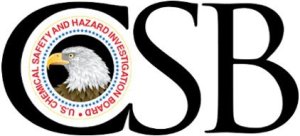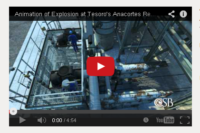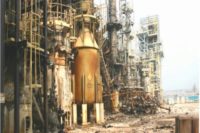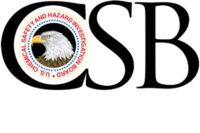 The U.S. Chemical Safety Board (CSB) has released a safety video detailing key lessons from the release of 32,000 pounds of anhydrous ammonia that occurred at Millard Refrigerated Services Inc. on August 23, 2010. The accident resulted in over 150 exposures to offsite workers, thirty of which were hospitalized – four in an intensive care unit.
The U.S. Chemical Safety Board (CSB) has released a safety video detailing key lessons from the release of 32,000 pounds of anhydrous ammonia that occurred at Millard Refrigerated Services Inc. on August 23, 2010. The accident resulted in over 150 exposures to offsite workers, thirty of which were hospitalized – four in an intensive care unit.
The newly released seven-minute safety video, entitled “Shock to the System,” includes a detailed 3D animation of the events that led up the resulting ammonia release. The video is based on the CSB’s recent safety bulletin entitled “Key Lessons for Preventing Hydraulic Shock in Industrial Refrigeration Systems.”
Key lessons
Chairperson Rafael Moure-Eraso said, “The CSB’s new safety video is a valuable tool intended for use at the large number of facilities that utilize anhydrous ammonia. The key lessons learned from our investigation – examined in our report and in this video -- can help facilities prevent a similar accident from occurring due to hydraulic shock.”
The CSB’s video is available at itsYouTube channel and at www.csb.gov
What investigators found
The CSB’s investigation found that the day prior to the accident the Millard facility experienced a loss of power that lasted more than seven hours. During that time the refrigeration system was shut down. The next day, on August 23, 2010, the system regained power and was up and running, though operators reported certain problems. While doing some troubleshooting an operator cleared alarms in the control system, which reset the refrigeration cycle on a group of freezer evaporators that were in the process of defrosting.
High pressure and low temps
This resulted in both hot, high-pressure gas and extremely low temperature liquid ammonia to be present in the coils and associated piping at the same time. This caused the hot high-pressure ammonia gas to rapidly condense into a liquid. Because liquid ammonia takes up less volume than ammonia gas – a vacuum was created where the gas had condensed.
The sudden pressure drop sent a wave of liquid ammonia through the piping – causing a sudden pressure surge known as “hydraulic shock.”
This abnormal transient condition results in a sharp pressure rise with the potential to cause catastrophic failure of piping, valves, and other components. Often prior to a hydraulic shock incident there is an audible “hammering” in refrigeration piping.
A catastrophic fail
CSB Investigator Tyler said, “The CSB’s animation details how the pressure surge ruptured the evaporator piping manifold inside one of the freezers causing a roof-mounted 12-inch suction pipe to catastrophically fail, resulting in the release of more than 32,000 pounds of anhydrous ammonia and its associated 12-inch piping on the roof of the facility.”
The release resulted in injuries to a Millard employee when he fell while attempting to escape from a crane after it became engulfed in the traveling ammonia cloud. The large cloud traveled a quarter mile from the facility south toward an area where 800 contractors were working outdoors at a clean-up site for the Deepwater Horizon oil spill. A total of 152 offsite workers and ship crew members reported symptomatic illnesses from ammonia exposure. Thirty two of the offsite workers required hospitalization, four of them in an intensive care unit.
The big mistake
The video presents the key lessons learned from the CSB’s investigation including avoiding the manual interruption of evaporators in defrost and requiring control systems to be equipped with password protection to ensure only trained and authorized personnel have the authority to manually override systems. On the day of the incident, the control system did not recognize that the evaporator was already in the process of defrosting, and allowed an operator to manually restart the refrigeration cycle without removing the hot ammonia gas from the evaporator coil.
A design problem
The CSB also found that the evaporators at the Millard facility were designed so that one set of valves controlled four separate evaporator coils. As a result, the contents of all four coils connected to that valve group were involved in the hydraulic shock event – leading to a larger, more hazardous pressure surge. As a result, the CSB notes that when designing ammonia refrigeration systems each evaporator coil should be controlled by a separate set of valves.
The wrong decision
And the CSB found that immediately after discovering the ammonia release, a decision was made to isolate the source of the leak while the refrigeration system was still operating instead of initiating an emergency shutdown. Shutting down the refrigeration system may have resulted in a smaller release, since all other ammonia-containing equipment associated with the failed rooftop piping continued to operate. A final key lesson from the CSB’s investigation is that an emergency shutdown should be activated in the event of an ammonia release if a leak cannot be promptly isolated and controlled. Doing so can greatly reduce the amount of ammonia released during an accident.



